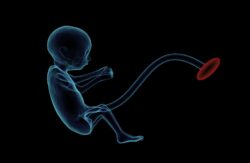Breakthroughs in Testicular Cancer Treatment: Hope for Men
This article provides an in-depth exploration of recent advancements in testicular cancer treatment. It examines the latest therapies and their implications for patient outcomes, shedding light on the importance of early detection. Alongside, it explores current screening methodologies, clinical trials, statistics, and coping strategies. Serving as a comprehensive guide, this article aims to inform and educate about the evolving landscape of testicular cancer treatment, offering hope for those affected by this rare but highly curable disease.

Key Takeaways
- Testicular cancer is rare and commonly diagnosed in men aged 20 to 34.
- Most cases of testicular cancer can be cured, even if detected at an advanced stage.
- There are various treatment options available for testicular cancer, including clinical trials.
- NCI provides resources and information to help individuals cope with the challenges of testicular cancer.
Understanding Testicular Cancer: A Brief Overview
To understand testicular cancer, one must first recognize that it typically originates in the germ cells, which are responsible for producing sperm. The evolution of research has greatly expanded our knowledge of this disease, leading to significant advancements in diagnosis and treatment strategies. Over the years, the advent of novel therapies has contributed to the high cure rates associated with this form of cancer. These therapies include, but are not limited to, surgical interventions, radiation therapy, chemotherapy, and targeted therapies. Research is ongoing to refine these approaches and explore new avenues for treatment, with the ultimate goal of improving patient outcomes while minimizing side effects. This continuous evolution of research and development of novel therapies signifies hope for those diagnosed with testicular cancer.
The Evolution of Testicular Cancer Treatments
Over the course of several decades, there has been a significant evolution in the treatment methods for testicular cancer, leading to improved survival rates and quality of life for patients. Traditional treatments, such as surgery, radiation, and chemotherapy, have been continuously refined. Furthermore, evolving therapies, including targeted therapies and immunotherapies, have been introduced. These innovative approaches offer personalized treatment options, based on the individual's genetic makeup and the specific characteristics of their cancer. Emphasis on early detection and advanced diagnostic techniques has also been a critical part of this evolution. These advancements demonstrate a dynamic growth in the medical field, offering hope and optimism for those affected by testicular cancer.
Recent Advancements in Testicular Cancer Therapies
In the realm of oncology, the recent years have witnessed an array of significant advancements in testicular cancer therapies, and these novel treatments are redefining what is possible in the battle against this disease. Recent research has paved the way for targeted therapies that aim at specific cancer cells without harming healthy ones, reducing side effects and improving overall patient outcomes. Additionally, immunotherapy has emerged as a promising frontier, harnessing the body's immune system to fight the cancer. Clinical trials are underway to further refine these treatments and explore new approaches. These cutting-edge therapies, resulting from rigorous research and clinical trials, offer renewed hope for those diagnosed with testicular cancer, signalling a new era in cancer treatment.
The Role of Chemotherapy in Testicular Cancer Treatment
While targeted therapies and immunotherapies are gaining ground in the treatment landscape, chemotherapy continues to play a crucial role in the management of testicular cancer, particularly in advanced stages and high-risk cases. The chemotherapy effectiveness is seen in its ability to stop or slow the growth of cancer cells, thereby reducing the tumor size and preventing the spread of the disease. It is often used as an adjuvant treatment post-surgery to eliminate any remaining cancer cells. Adjuvant chemotherapy options include drugs like cisplatin, etoposide, and bleomycin, administered singly or in combination. These options have shown high cure rates, and their choice depends on the cancer type, stage, overall health of the patient, and potential side effects.
Radiotherapy: Its Impact on Testicular Cancer
As we turn our attention to radiotherapy, it is essential to understand its significant impact on the treatment and management of testicular cancer. Radiotherapy uses high-energy radiation to destroy cancer cells, proving to be a vital tool, especially for seminoma type testicular cancers. However, radiotherapy side effects, including fatigue, skin changes, and nausea, can cause distress. Fortunately, health professionals manage these using various strategies, enhancing patient comfort. Simultaneously, emerging therapies are being explored to optimize the benefits of radiotherapy while minimizing side effects. Advanced techniques like intensity-modulated radiotherapy (IMRT) and stereotactic body radiotherapy (SBRT) offer precision targeting, reducing damage to surrounding tissues. Thus, radiotherapy, despite its challenges, remains a cornerstone of testicular cancer treatment.
Potential of Surgical Approaches in Testicular Cancer
Bearing the potential to dramatically improve patient outcomes, surgical approaches in testicular cancer treatment have evolved significantly over the years, and they continue to be refined for optimal efficacy and minimal side effects. One such approach is laparoscopic surgery, a less invasive technique that reduces post-operative pain and speeds up recovery. This method has shown great promise in removing lymph nodes affected by testicular cancer. Another frequently employed surgical technique is radical orchidectomy, which involves the removal of the entire testicle through an incision in the groin. This surgery remains the gold standard for initial testicular cancer management, due to its high success rate. Indeed, these innovative surgical strategies offer renewed hope for men battling testicular cancer.
Immunotherapy: A New Hope in Testicular Cancer Treatment
Immunotherapy, a revolutionary player in the fight against testicular cancer, offers the medical community's latest approach to treatment and is rapidly gaining recognition for its potential to boost the body's own defenses against the disease. The advancements in immunotherapy are delivering promising results, particularly in the form of targeted therapies in testicular cancer. These therapies are designed to identify and attack specific cancer cells, minimizing harm to healthy cells, and improving overall patient outcomes. The use of monoclonal antibodies and checkpoint inhibitors are examples of these targeted techniques. Despite being in the early stages of implementation, current data suggests that this innovative approach could significantly alter the landscape of testicular cancer treatment, providing a new beacon of hope for patients.
Personalized Medicine: Tailoring Treatment for Testicular Cancer
In the realm of testicular cancer treatment, personalized medicine is emerging as a transformative approach that tailors therapy to the unique genetic makeup of both the patient and the tumor. Known as precision medicine, this approach aims to maximize efficacy and minimize adverse effects. It involves the use of targeted therapies that selectively attack cancer cells based on their specific mutations, sparing healthy cells. This strategy reduces the systemic toxicity often associated with traditional chemotherapy. Precision medicine also includes the monitoring of the tumor's genetic changes over time, allowing adjustment of the treatment plan as required. While still in its early stages, this personalized approach to testicular cancer treatment promises a future where care is individually tailored, improving outcomes and quality of life.
The Importance of Early Detection in Testicular Cancer
While we continue to make strides in treatment methods, it's crucial to remember that early detection of testicular cancer can significantly improve the prognosis and treatment outcomes for many men. The role of self-examination cannot be overstated. Regular self-examinations enable men to become familiar with their bodies and to detect any unfamiliar lumps or swellings promptly. This proactive approach can lead to early detection, resulting in more effective treatment. Equally important is the adherence to regular check-ups with healthcare professionals. These appointments provide an opportunity for more comprehensive examinations and the early identification of potential issues. Thus, prioritizing these two practices can lead to improved survival rates and better quality of life for those diagnosed with testicular cancer.
Lifestyle Changes to Complement Testicular Cancer Treatments
Adopting healthy lifestyle habits and making appropriate changes can significantly complement testicular cancer treatments, enhancing not only the effectiveness of the therapy but also the patient's overall wellbeing. Complementary therapies such as regular physical activity, balanced nutrition, adequate rest, and stress management can play a crucial role in managing side effects, improving treatment response, and promoting health during and post-treatment. Incorporating these changes into daily life can also strengthen survivorship care, providing a holistic approach to living with and beyond cancer. Ultimately, these lifestyle modifications work in tandem with medical treatments, supporting the body's healing process, boosting immunity, and enhancing the quality of life for men battling testicular cancer.
The Psychological Aspect of Dealing With Testicular Cancer
Beyond the physical challenges that come with a diagnosis of testicular cancer, there are significant psychological hurdles to navigate as well. The impact on mental health can be substantial, potentially leading to conditions such as depression or anxiety. It's crucial for patients to be proactive in addressing these psychological aspects. Active participation in support groups can offer solace and understanding from those undergoing similar experiences. These groups can provide a platform for sharing coping strategies, thereby reducing feelings of isolation. Mental health professionals can also provide valuable tools for managing stress and anxiety. Incorporating these resources into the treatment plan can greatly enhance a patient's overall wellbeing and resilience during their journey through testicular cancer treatment.
Resources and Support for Testicular Cancer Patients
In the journey through testicular cancer, patients and their loved ones often require not only medical assistance, but also emotional and practical support, for which a multitude of resources are available. Support groups play a crucial role in this process. These can provide a safe space for patients to share experiences, express emotions, and learn coping strategies. They offer a sense of community and reassurance that one is not alone in this fight. Survivor stories can serve as a beacon of hope, showing that recovery is possible and that life can continue post-cancer. These narratives can inspire resilience and determination, and can be found on various platforms, such as cancer organization websites and social media. These resources and supports are vital in complementing medical treatment.
Future Perspectives in Testicular Cancer Treatment
The evolution of testicular cancer treatment is poised for significant advancements in the near future, promising a new era of therapeutic strategies and improved patient outcomes. Future research is crucial in this regard, with efforts focusing on the development of precise, targeted therapies to more effectively combat the disease. These innovative treatments will aim to eliminate cancer cells while minimizing damage to healthy tissues. In addition, researchers are exploring the genetic basis of testicular cancer to identify novel therapeutic targets. The integration of these targeted therapies in clinical practice could dramatically enhance the prognosis for men with testicular cancer. Therefore, the future of testicular cancer treatment is promising, offering hope for improved survival and quality of life for patients.
Frequently Asked Questions
What Is the Prevalence of Testicular Cancer in Men Over the Age of 50?
Testicular cancer is less prevalent in men over the age of 50, however it is not unheard of. Diagnostic advancements have improved early detection, even in this age group, thus increasing the survival rates. Survivor experiences often highlight the importance of regular self-examinations and prompt medical attention, which can greatly contribute to successful treatment outcomes, regardless of age.
Are There Any Specific Genetic or Environmental Factors That Increase the Risk of Developing Testicular Cancer?
Certain genetic predispositions can increase the risk of developing testicular cancer. For instance, men with a family history of the disease are at a higher risk. Additionally, men with undescended testes are also more susceptible. Environmental triggers such as exposure to certain chemicals and previous history of testicular trauma or infection may also contribute to an increased risk. However, these factors alone do not definitively predict the occurrence of testicular cancer.
What Are Common Side Effects of Testicular Cancer Treatments and How Can They Be Managed?
Common side effects of testicular cancer treatments include fatigue, nausea, and hair loss due to chemotherapy, and surgical complications. Advancements in treatment have mitigated some side effects and improved patient outcomes. Coping strategies include medication for symptom management, physical activity to combat fatigue, and counselling for emotional support. Tailored treatments and supportive care measures are crucial in managing these side effects effectively.
How Does Testicular Cancer Affect Fertility and What Options Are Available for Those Wishing to Have Children Post-Treatment?
Testicular cancer treatments can potentially impact fertility by affecting sperm production. However, options such as sperm banking prior to treatment, can preserve fertility for future family planning. This involves collecting and storing sperm for use in assisted reproductive technologies post-treatment. Additionally, adoption is another viable option for those wishing to have children. Each option has its own considerations and should be discussed thoroughly with a healthcare provider.
What Financial Resources or Assistance Programs Are Available for Individuals Undergoing Treatment for Testicular Cancer?
Financial resources for individuals undergoing testicular cancer treatment vary based on individual circumstances. However, many patients rely on insurance coverage to offset medical costs. Additionally, there are assistance programs that provide supportive care, including help with transportation, meals, and emotional support. Non-profit organizations, government programs, and hospital assistance programs can also provide financial help. It's crucial for patients to discuss these options with their healthcare providers or a financial counselor.
Conclusion
Recent advancements in testicular cancer treatment, highlighted by innovative therapies and improved chemotherapy and radiotherapy techniques, have ushered in a new era of hope for patients. Coupled with supportive resources and lifestyle modifications, these breakthroughs promise improved outcomes. The future of testicular cancer treatment is bright, with ongoing research and clinical trials expected to yield further innovation. Early detection and understanding of the disease remain crucial components of this fight against testicular cancer.

This post has been generated by AI and was not reviewed by editors. This is Not legal advice. Please consult with an attorney.




